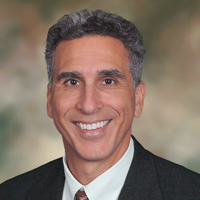Focus on Protecting Your Nest Egg Once You're Retired
How much do you really need to earn on your investments once you retire? Figure it out, and then don't take one more iota of risk than necessary.


If you’re like most investors, you’ve focused on making money for most of your financial life. But once you’re retired or close to retirement, I believe you need to shift gears, to put protection ahead of growth in order to make your savings last.
SEE ALSO: Is 4% Withdrawal Rate Still a Good Retirement Rule of Thumb?
In other words, I suggest you should only take as much risk as is necessary to accomplish your financial goals.
Calculate How Much Return You Really Need
Let's say you’ve done extremely well with your savings and investments over the years. You have $10 million in savings and live on $100,000 a year, so your cost of living is basically 1%. If you earned just 1% on your money, you’d never tap into your nest egg at all. I’d say you’ve won the game, and that you shouldn't risk that win. If you were the coach of a football team that was ahead by 10 points in the fourth quarter, would you tell your players to do anything that could cost you the game? I wouldn’t, and I’d say the same to an investor.

Sign up for Kiplinger’s Free E-Newsletters
Profit and prosper with the best of expert advice on investing, taxes, retirement, personal finance and more - straight to your e-mail.
Profit and prosper with the best of expert advice - straight to your e-mail.
If you have $10 million and only need a 1% return to support your lifestyle, I believe you should have no stock market risk. At that rate, you could probably put your money in a savings account and make enough to support your lifestyle.
It can be tempting to take a risk, especially when the market is bullish, but let me ask you this: If I could somehow guarantee you that a 2% rate of return would keep you financially secure for the rest of your life, would you take that rate — even if it didn’t beat the S&P? I think most people would take that deal and be really happy that they never had to worry about money again.
That’s why I believe that your retirement income is more important than the percentage return on your money.
What If You’re Not as Well Off?
But what if you only had $100,000 saved and you needed $10,000 a year to support your lifestyle? That would mean you needed a 10% rate of return. Would I advise you to chase a 10% return? No. I’d argue that that there’s no way to get that rate consistently.
Yes, the average annual return for the S&P 500 since its inception is 10%, but once you adjust for inflation, the average drops to around 7%. And there’s a bigger problem: That rate is an average from 1926 through 2018. The rate is nowhere as consistent in smaller increments of time. The average rate of return in 2007 was just 5.48% — and in 2008 it was -36.55%.
And to reiterate the point of this article: If you chase high returns, you are taking high risks. When you were working, you might have been able to cover some of your losses with your salary. But once you’re retired, you’re not just risking your nest egg: You’re risking income that helps to cover your cost of living. You’re running the risk of becoming poor.
See Also: How Can I Estimate the Income I'll Need in Retirement?
Two Options to Address Your Shortfall
Since attempting high returns is too risky, what can you do to make ends meet in retirement if your savings are falling short of your spending needs? Before you consider amping up your stock market risk to make up for the shortfall, first I’d suggest you take a hard look at your expenses instead.
Cost-cutting is difficult for most people. The term implies eliminating something you do—and probably do for enjoyment rather than necessity, or else it wouldn’t be on the table as a cost-cutting option. Instead, I advise people whose lifestyles outstrip their financial capabilities to reduce quantity. For example, I don’t suggest they stop playing golf, but cut back from playing from five days a week to playing three. If they’re eating out three times a week, I suggest they dine out once weekly.
It makes sense: If you want to lose weight, you don't stop eating, you just eat less. This “reduction in quantity” is the same sort of idea. If you manage quantity, the expenses will take care of themselves.
And if cost cutting doesn’t get you far enough? Well, there’s another thing you may need to do: Consider working longer, or, if you’re already retired, go back to work.
A Different Way to Think About Retirement
If you think my version of financial planning for retirement looks more like cash flow analysis than a typical investment plan, you’d be right. My job as a financial adviser is to help my clients’ money last as long as they do. I think that’s your job as an investor, too. And I think the best way to do that is to take only as much risk as you need to support your standard of living.
See Also: Want a Second Passport? Here Are 3 Countries You Can Buy Your Way Into the EU
Get Kiplinger Today newsletter — free
Profit and prosper with the best of Kiplinger's advice on investing, taxes, retirement, personal finance and much more. Delivered daily. Enter your email in the box and click Sign Me Up.

Ken Moraif is the CEO and founder of Retirement Planners of America (RPOA), a Dallas-based wealth management and investment firm with over $3.58 billion in assets under management and serving 6,635 households in 48 states (as of Dec. 31, 2023).
-
 Ten Cheapest Places To Live in Florida
Ten Cheapest Places To Live in FloridaProperty Tax Make your Florida vacation spot daily living — these counties have the lowest property tax bills in the state.
By Kate Schubel
-
 I'm 50 and my home is worth $5 million. Can I retire now?
I'm 50 and my home is worth $5 million. Can I retire now?It may be oh-so tempting to cash out your upscale home and leave work for good. But should you? We ask the experts.
By Maurie Backman
-
 Bouncing Back: New Tunes for Millennials Trying to Make It
Bouncing Back: New Tunes for Millennials Trying to Make ItAdele's mournful melodies kick off this generation's financial playlist, but with the right plan, Millennials can finish strong.
By Alvina Lo
-
 Early-Stage Startup Deals: How Do Convertible Notes Work?
Early-Stage Startup Deals: How Do Convertible Notes Work?Some angel investors support early startups by providing a loan in exchange for a convertible note, which includes annual interest and a maturity date.
By Murat Abdrakhmanov
-
 SRI Redefined: Going Beyond Socially Responsible Investing
SRI Redefined: Going Beyond Socially Responsible InvestingNow that climate change has progressed to a changed climate, sustainable investing needs to evolve to address new demands of resilience and innovation.
By Peter Krull, CSRIC®
-
 Here's When a Lack of Credit Card Debt Can Cause You Problems
Here's When a Lack of Credit Card Debt Can Cause You ProblemsUsually, getting a new credit card can be difficult if you have too much card debt, but this bank customer ran into an issue because he had no debt at all.
By H. Dennis Beaver, Esq.
-
 Going to College? How to Navigate the Financial Planning
Going to College? How to Navigate the Financial PlanningCollege decisions this year seem even more complex than usual, including determining whether a school is a 'financial fit.' Here's how to find your way.
By Chris Ebeling
-
 Financial Steps After a Loved One's Alzheimer's Diagnosis
Financial Steps After a Loved One's Alzheimer's DiagnosisIt's important to move fast on legal safeguards, estate planning and more while your loved one still has the capacity to make decisions.
By Thomas C. West, CLU®, ChFC®, AIF®
-
 How Soon Can You Walk Away After Selling Your Business?
How Soon Can You Walk Away After Selling Your Business?You may earn more money from the sale of your business if you stay to help with the transition to new management. The question is, do you need to?
By Evan T. Beach, CFP®, AWMA®
-
 Two Don'ts and Four Dos During Trump's Trade War
Two Don'ts and Four Dos During Trump's Trade WarThe financial rules have changed now that tariffs have disrupted the markets and created economic uncertainty. What can you do? (And what shouldn't you do?)
By Maggie Kulyk, CRPC®, CSRIC™